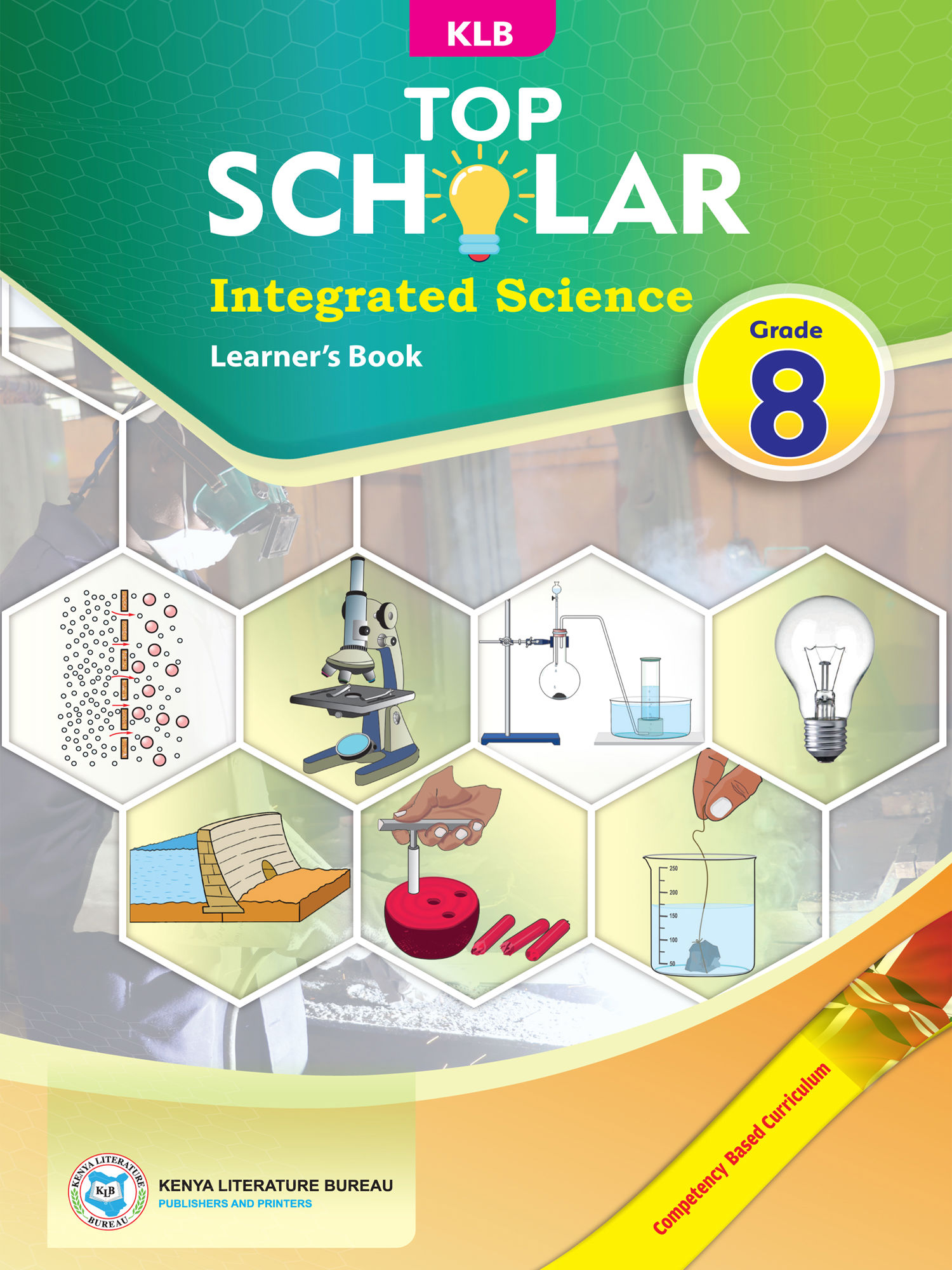
Authors
Publisher
Included in packages

-
The study kit contains 95 chapters and 195 exercises of which 195 are in the chapters and 0 in the task exercises.
-
Authors
-
Subject
Science and technology -
Grade
Grade 8 -
Kit's language
English -
Publisher
Kenya Literature Bureau -
Included in packages
KLB TopScholar Intergrated Science Learner's Book for Grade 8 comprehensively covers Intergrated Science Concepts outlined in the Competency Based Curriculum Designs for Grade 8.
The course book is intended to develop indepth knowledge of Science concepts in the learner. The content covers the following concepts: Foundation of scientific investigation, Mixtures, Elements and Compounds, Living Things and their Environment, Force and Energy.
This course book has the following unique features:
• Activities that involve the learner in the teaching and learning process through discussions with other learners.
• Coverage of concepts in an approach that assumes no prior knowledge on the part of the learner. The activities guide the learner through the simple known-to-unknown approach.
• Development of 21st Century Competencies including: Critical Thinking, Communication, Collaboration, Problem-solving, Creativity, Innovation, and Digital Literacy. These are necessary competencies for learners who will specialise in the STEM pathway.
• Extended learning and problem-solving engagements that provide learners with the opportunity to participate in community-based projects.
• Illustrations and photographs that complement the content and enrich the learning process.
• Varied review and assessment exercises. The solutions to the assessments are provided in the Teacher’s Guide.
The accompanying Teacher's Guide provides comprehensive guidelines for inquiry-based learning approaches. The learning methods discussed in the guide emphasise learner-centred approaches. The guide is an invaluable resource that helps the teacher interpret and achieve the learning outcomes outlined in the Kenya Institute of Curriculum Development (KICD) Curriculum Designs.
